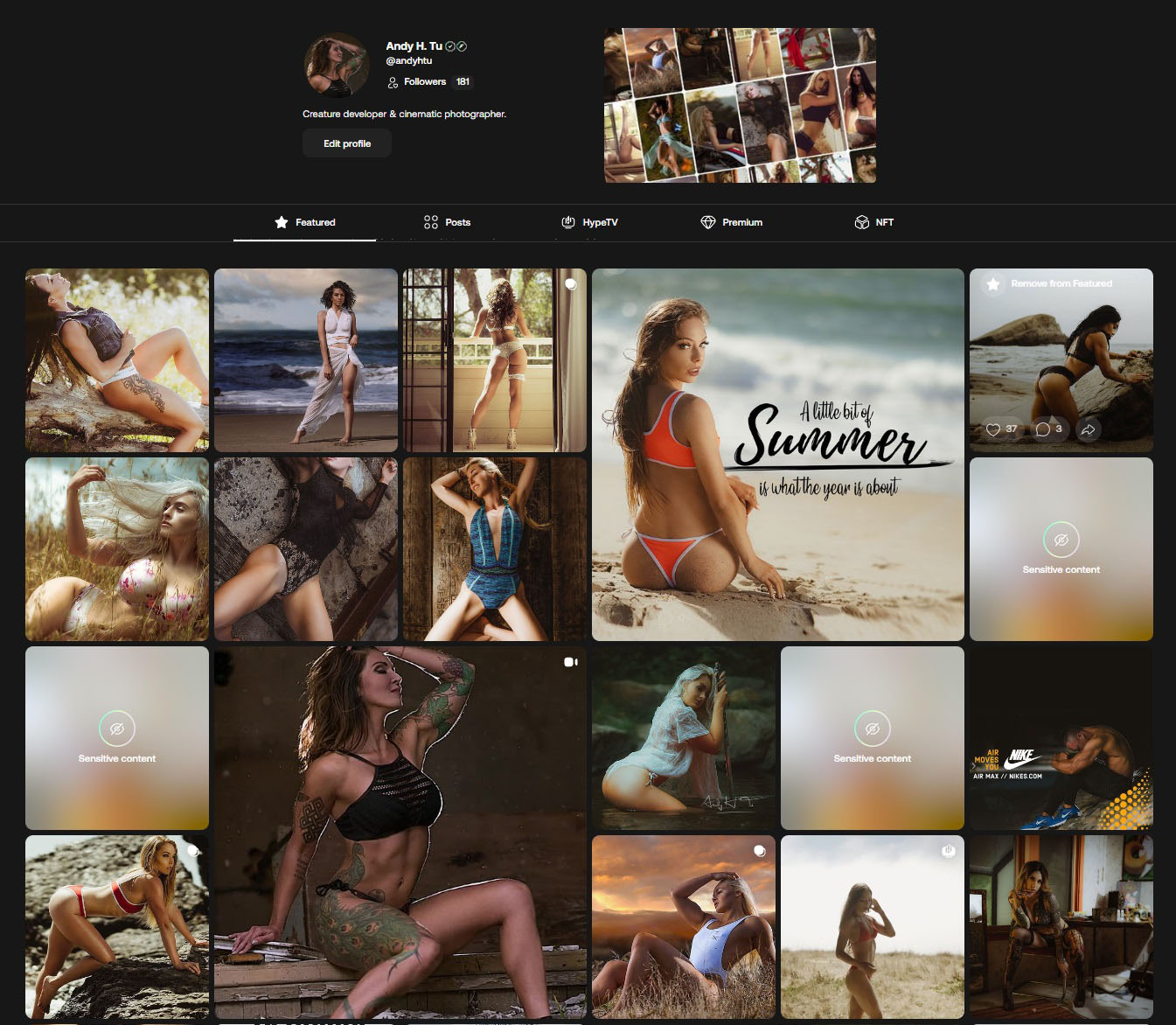
Viewer Ad Revenue: How Paying Viewers for Ad Revenue Could Save the Creator Economy
Paying Viewers for Ad Revenue

Viewer Ad Revenue. The year is 2023 and the online landscape has changed dramatically. Many of the popular platforms that used to offer free content and services are now charging subscription fees or limiting access to their features. YouTube, Facebook, Instagram, Twitter, TikTok, and others have followed the example of OnlyFans, which was one of the first platforms to adopt a subscription-only model.
Why did this happen? The main reason is that brands are spending less money on advertising, which was the main source of income for these platforms. As a result, these platforms are losing money and struggling to keep their creators and users happy. Many creators have left the platforms or reduced their output, while many users have switched to alternative sites or apps that offer more value for their money.
This situation has a negative impact on the creator economy, which is the term used to describe the phenomenon of people making a living or supplementing their income by creating and sharing online content. The creator economy relies heavily on ad revenue, which is the income that people and businesses earn by displaying paid advertisements on their digital properties, such as websites, social media channels, and applications.
But what if there was a way to revive the ad revenue model and make it more appealing for both advertisers and viewers? What if viewers could get paid for watching ads, instead of paying to avoid them? This is the idea that I want to explore in this blog post, and explain why I think it could work.
Table of Contents
The Benefits of Paying Viewers for Ad Revenue
The concept of paying viewers for ad revenue is not new. In fact, some platforms already offer this option, such as Brave Browser, which rewards users with cryptocurrency for viewing ads, or Swagbucks, which pays users with gift cards or cash for completing tasks that involve watching ads.
However, these platforms are not very popular or widely used, and they do not offer a significant amount of money for viewing ads. What I propose is a more radical and ambitious approach: paying viewers a fair share of the ad revenue that they generate for the platforms and the advertisers.
How would this work? Well, imagine that you are watching a video on YouTube or a live stream on Twitch. Before or during the video or stream, you see an ad that is relevant to your interests and preferences. Instead of skipping or ignoring the ad, you watch it until the end. At that moment, you receive a notification that you have earned a certain amount of money for watching the ad. This money is transferred to your digital wallet or account, and you can use it to buy products or services online, or withdraw it as cash.
This system would have several benefits for both viewers and advertisers. For viewers, it would mean:
Getting paid to consume:
Get paid for something that they already do: watching online content.
Having more control over their data and privacy:
They can choose which ads to watch and which data to share with advertisers.
Having more incentive to watch ads:
They can earn money while learning about new products or services that might interest them.
Having more loyalty to the platforms:
They can support their favorite creators and platforms by watching ads that generate revenue for them.
For advertisers, it would mean:
Having more access to potential customers:
They can reach more viewers who are willing to watch their ads.
Having more engagement and conversion:
They can create more effective ads that capture the attention and interest of viewers who are rewarded for watching them.
Having more trust and reputation:
They can build a positive image and relationship with viewers who appreciate their contribution to the creator economy.
The Challenges of Viewer Ad Revenue
Of course, paying viewers for ad revenue is not a simple or easy solution. It would require a lot of changes and challenges for both platforms and advertisers. Some of these challenges are:
Setting up a fair and transparent system:
How much should viewers get paid for watching ads? How should the revenue be split between platforms, advertisers, and viewers? How should the payments be processed and verified?
Ensuring quality and relevance:
How should ads be selected and matched with viewers? How should ads be monitored and evaluated for quality and performance? How should fraud and abuse be prevented and detected?
Balancing supply and demand:
How should ads be distributed and allocated among viewers? How should ads be priced and bid for by advertisers? How should ad inventory be managed and optimized?
These are not trivial questions, and they would require a lot of research, experimentation, and innovation from both platforms and advertisers. However, I believe that they are not insurmountable obstacles, and that they could be overcome with enough creativity and collaboration.
The Future of Paying Viewers for Ad Revenue
Paying viewers for ad revenue might sound like a utopian or unrealistic idea. However, I think that it is a viable and desirable idea that could benefit everyone involved in the creator economy. It could revive the ad revenue model and make it more sustainable and equitable for platforms, advertisers, creators, and viewers.
Some might argue that paying viewers for ad revenue does not add up, or that it is too complicated or risky to implement. In fact, Wired wrote an article on this a while back, criticizing the proposal of Andrew Yang, a former US presidential candidate, who suggested that people should get paid for their data.
However, I disagree with Wired’s analysis, and I think that they missed some important points. For example, they assumed that paying viewers for ad revenue would mean paying them for their data, which is not necessarily the case. Data is only one of the factors that determine the value of an ad. Other factors include attention, engagement, conversion, and retention. Paying viewers for ad revenue would mean paying them for all of these factors, not just data.
Moreover, Wired overlooked the potential benefits of paying viewers for ad revenue, such as increasing the quality and relevance of ads, improving the user experience and satisfaction, and boosting the growth and innovation of the creator economy. Paying viewers for ad revenue could create a positive feedback loop that would enhance the value and performance of online advertising for everyone.
I think that paying viewers for ad revenue is an idea worth exploring and experimenting with. It could be a game-changer for the creator economy and the online world in general. It could be a win-win situation for platforms, advertisers, creators, and viewers. It could be the future of online advertising.
I’ve written my thoughts on how Data Monetization could be big one day and it would be need to be taken on the blockchain level. Read it here.

Introduction: The Problem of Art Theft and How it Affects Artists n The problem of art theft has always been a major concern for artists, but with the rise of digital art and the advancements in AI technology, it has become even more complicated. Many AI art platforms like StableDiffusion, Dall-E, and Midjourney are using…
A Counter Perspective: Concerns and Considerations
While this proposal may seem enticing, it’s not without controversy. Some argue against paying viewers for ad revenue, citing potential downsides and complexities. For instance, data is often seen as the new currency of the internet, and viewers voluntarily provide data while engaging with online content. The counterargument suggests that paying viewers for their data may further complicate the already intricate issue of data privacy and ownership. This perspective acknowledges that while data is valuable, it may not be the only factor to consider when compensating viewers.
Additionally, some contend that AI data scraping, whereby algorithms replicate artistic and creative works, poses a genuine threat to creativity. While AI can be a powerful tool for enhancing human creativity, its potential for copying existing creative works is a source of concern. The increasing prevalence of AI-generated content and the potential for the replication of artistic styles raise questions about copyright and intellectual property rights.
Furthermore, it’s important to note that the creator economy relies heavily on the support of brands and ad revenue. Viewers and creators both benefit from the financial contributions of advertisers. While paying viewers for ad revenue is a compelling idea, it doesn’t negate the importance of advertisers in sustaining the creator economy. Advertisers play a vital role in enabling creators to earn a living and produce the content viewers enjoy.
The discussion around paying viewers for ad revenue presents both opportunities and challenges. The proposal seeks to create a symbiotic relationship between viewers, creators, and advertisers, where all parties benefit. However, it is not without its complexities and potential drawbacks.
Data Selling and Alternative Monetization
Data is a valuable asset, and it’s only fair that it’s both respected and compensated. However, not all data is created equal. Some data is personal, sensitive, or highly valuable. Hence, the price and terms for data selling should adapt to the type and quality of data being exchanged.
Transparency and user consent are non-negotiable. Users have a right to know who’s buying their data, how it will be used, and what protective measures are in place. Moreover, users should always have the option to opt out of data selling.
Brands and ad revenue have traditionally played a central role in supporting creators. However, there are alternative avenues for monetization beyond advertisements. Creators can diversify their income streams through subscriptions, memberships, donations, merchandise, courses, events, and other services offered to their fans. These alternative methods provide creators with more stability and diversified income sources while enhancing the value and engagement for viewers.
Yet, the real potential for transformation lies in the world of data monetization. By embracing data as a new form of currency, social media platforms have the power to fundamentally change the way they operate. This shift could lead to a more equitable online ecosystem where users become not just consumers, but valued participants who receive tangible rewards for their digital footprints. Such a paradigm shift could breathe new life into the creator economy, fostering a more sustainable and inclusive model. It might also boost innovation and creativity by placing a higher value on the digital contributions of every user.
In this future, data monetization has the potential to thrust both creators and regular users into the limelight. Social media platforms could flourish by ensuring that every user becomes a stakeholder in the digital economy, where their data is acknowledged and fairly compensated. This vision holds immense promise and could redefine the future of social media as we know it.
What do you think? Do you agree or disagree with me? Would you like to get paid for watching ads? Let me know in the comments below!








Leave a Reply